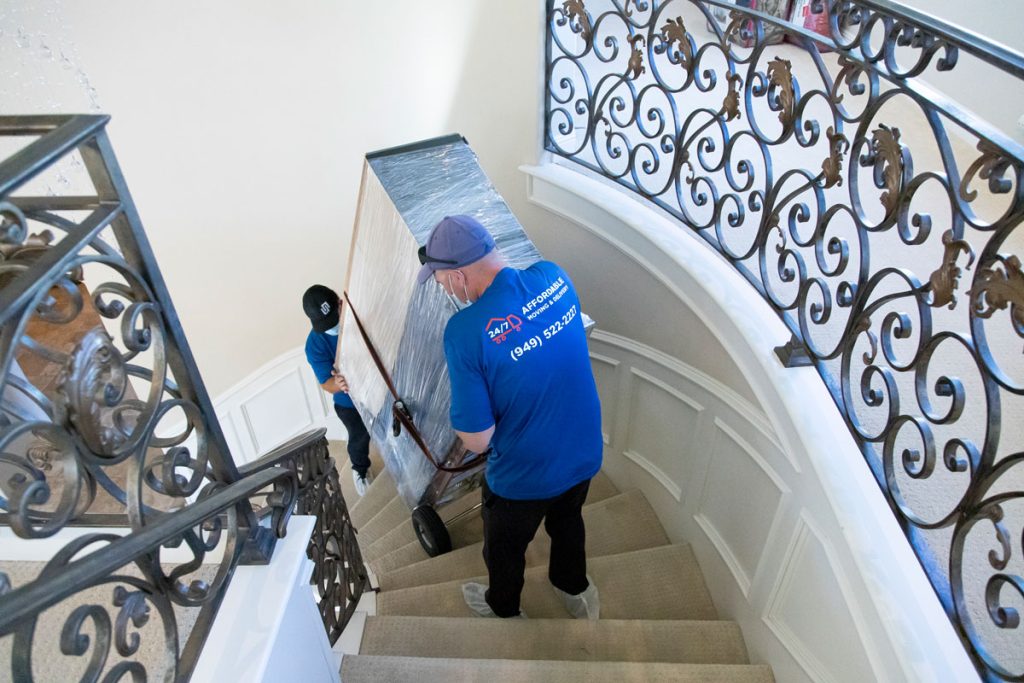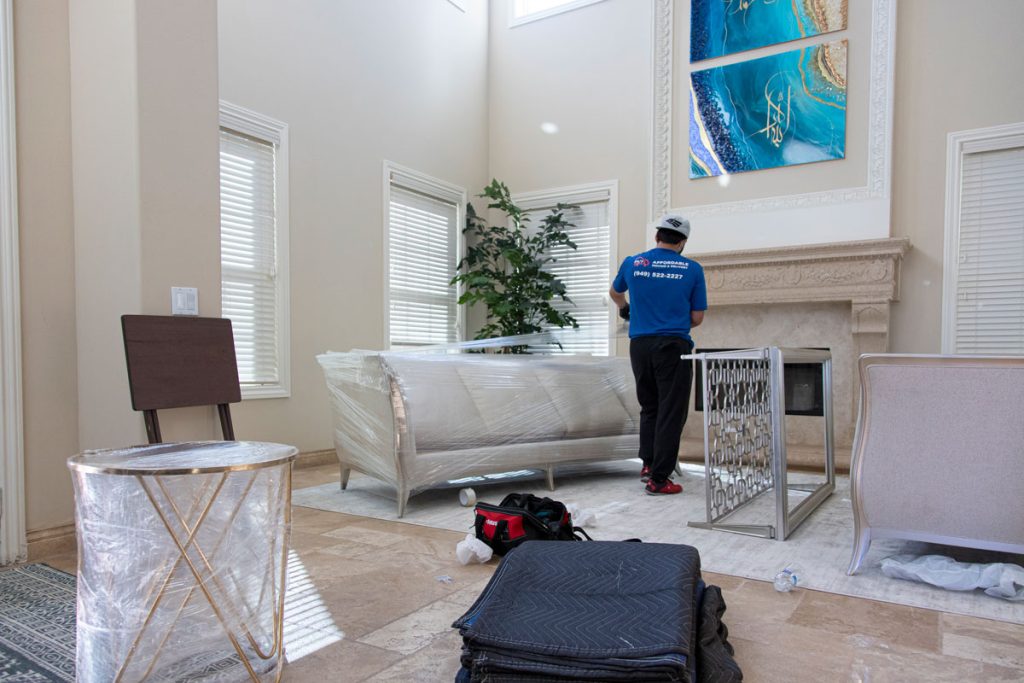How to move Specialty Items: Pianos, Artwork, and More

Items like pianos, artwork, or even aquariums require special attention during the move. These aren’t just any old things, they’re valuable, often sentimental, and not the easiest things to wrap in bubble wrap. You might be wondering, “How on earth do I move my fish without causing a Finding Nemo situation?” or “Will my piano survive the journey?”. Well, our guide is here to help you with moving specialty items.
Understanding the challenge
Big, bulky, fragile things like pianos, precious pieces of art, or even a fully stocked aquarium aren’t just items you can toss in a cardboard box and hope for the best. No, these items are often costly and hold significant sentimental value. The task is no longer just about moving from Point A to Point B — it’s about carefully strategizing, planning, and executing the move because the real challenge here lies in the safe and efficient transportation of these items. It’s about making sure that your beloved grand piano doesn’t get a scratch, your treasured artwork remains unscathed, and your aquarium inhabitants survive the trip without so much as a ripple.
Choosing the right moving company
The first thing you need to do is find a reliable moving company that knows how to relocate specialty items properly — a company that treats your beloved piano or treasured aquarium with the respect they deserve. Such companies don’t just have experience under their belt; they’ve got the right equipment to ensure your items are moved safely.
Look for companies that offer specific services tailored to your needs. For example, if you’re wondering “How to transport an aquarium”, seek out providers who clearly state they offer this service. If it’s the piano moving difficulty that’s got you stressed, look for movers who are experienced in handling such items.
A great example of such a company is Affordable Moving & Delivery Inc. A team of professional movers serves areas like Orange County and Los Angeles, helping people move everything from studio apartments to large commercial spaces. We always make sure your move is as stress-free as possible, no matter how big or small the job. So, whether it’s a local move within California or an interstate journey, you can trust us to move your specialty items with care.
Process of moving specialty items
Moving specialty items starts with a thorough assessment. Our team takes this part of the process very seriously. They don’t just show up and start moving stuff. Instead, they take the time to evaluate each specialty item, considering its size, weight, and fragility to understand the unique challenges each item presents and create a plan to overcome them.
Here’s how it works:
- The movers will measure your item to get a sense of its dimensions. It is important to determine the best way to navigate it out of your old place and into your new one, as well as figure out the optimal placement within the moving vehicle.
- Next, they’ll assess the weight of the item. This helps them determine how many movers will be needed for the job and what kind of equipment they’ll need to use.
- Finally, they’ll evaluate the fragility of the item. This is particularly important for things like artwork or aquariums, which can be easily damaged if not handled with care. The team will then devise a plan for packing and moving the item to minimize the risk of damage.
This comprehensive assessment helps the team to understand the scope of the move and plan accordingly. This way, you can rest easy knowing your precious items are in good hands.
Assessing the specialty items
Once you’ve chosen your moving company, they will come to assess your specialty items.
Think of it as a “getting to know you” session between the movers and your special items — be it your grand piano, precious artwork, or beloved aquarium. The movers will take this time to thoroughly assess each item. They’ll take precise measurements, check for any pre-existing damage (because the last thing you need is being blamed for a scratch that was already there), and figure out what equipment they’ll need.
This step allows the movers to plan appropriately for the task ahead as knowing your items ensures they can provide a service specifically to your needs.
Packing and preparation
Packing and preparation for the relocation transforms your movers into a team of careful packers, meticulous planners, and smart problem-solvers. Without proper prep, even the sturdiest items can run into trouble on moving day. This process works differently for different types of specialty items:
- Artwork. Your precious paintings and sculptures are valuable pieces that need to be handled with care. That’s why they’re wrapped up snugly in protective materials and then placed in custom crates to prevent any damage during transport.
- Pianos. These musical giants need some extra attention. If possible, they’ll be carefully dismantled, and each part is then secured to ensure nothing moves out of place during the move.
- Aquariums. Aquariums aren’t just glass boxes — they’re miniature ecosystems. The team needs special knowledge on how to transport them without harming your aquatic friends inside. This involves carefully moving the fish to separate containers and draining the tank for transport. It’s a delicate task but your underwater world can make the trip safely due to proper care.
Packing and preparation are perhaps the most critical steps in moving specialty items. They could be the difference between a stressful move and a smooth relocation to your new home. So, trust our team in performing these steps with you. However, this would be difficult without proper communication with movers.

Communicating with movers
Keep the lines of communication open with your movers at all times. Don’t be shy about asking what steps they’re taking to keep your precious items safe. If something’s bothering you or if there’s a nagging question on your mind, just voice it out. Remember, no question is too small or silly when it comes to the safety of your items.
The more you know about what’s happening, the better you’ll feel. Understanding the process can take away a lot of the stress and give you that much-needed peace of mind when moving day rolls around.
Executing the move
On the day of the move, it is important to ensure the process proceeds as planned. Here’s a quick checklist to make sure everything goes off without a hitch:
- Your movers should show up right on schedule. Punctuality is key to getting things off to a good start.
- The movers should have all the right equipment they promised to bring, such as custom crates, protective materials, special tools, and so on.
- The team should follow the plan you agreed upon for moving your specialty items — whether it’s taking apart the piano or securing your piece of art.
- If any issues happen along the way, whether it’s a piano moving difficulty or additional questions about your fish to better know how to transport your aquarium properly, the movers should talk to you about them and work swiftly to get things back on track.
A good plan and open communication can make your relocation a lot smoother than you think. Take a deep breath, keep this list handy, and get ready to settle into your new home.
Unpacking and settling in
Finally, your belongings have moved to your new home and it’s time to get settled in. It’s better to trust unpacking your specialty items to the moving company you’ve chosen. The movers will take the lead in unpacking your stuff and making sure that everything is just as it was when it left your old place. And don’t worry about all the packing materials. They’ll take care of cleaning up all the boxes, bubble wrap, and tape, so you can focus on enjoying your new home.

